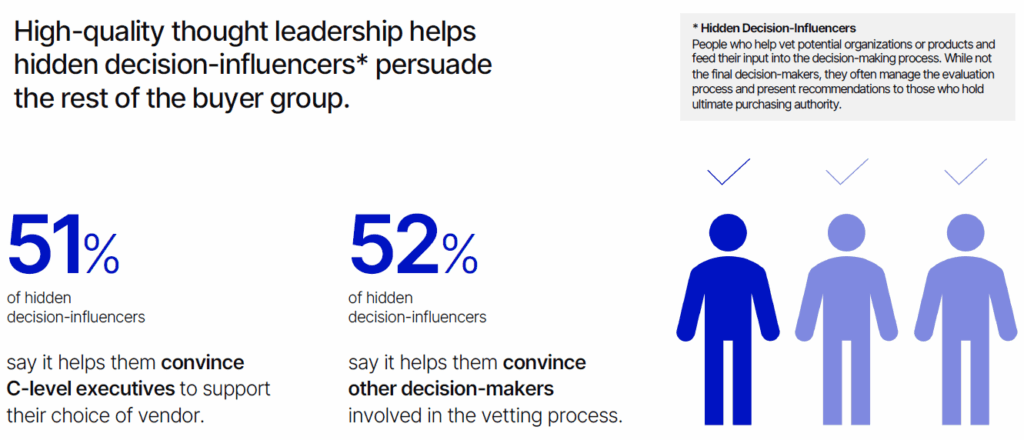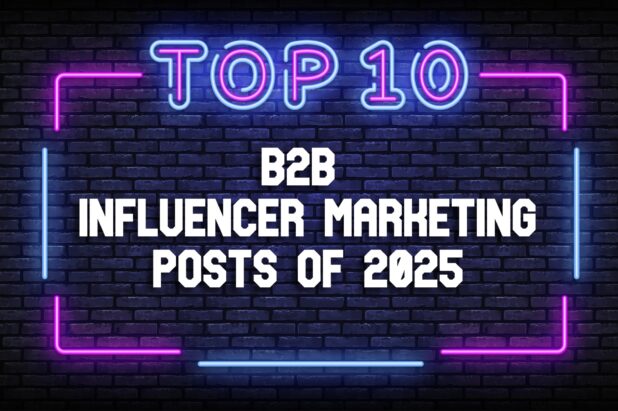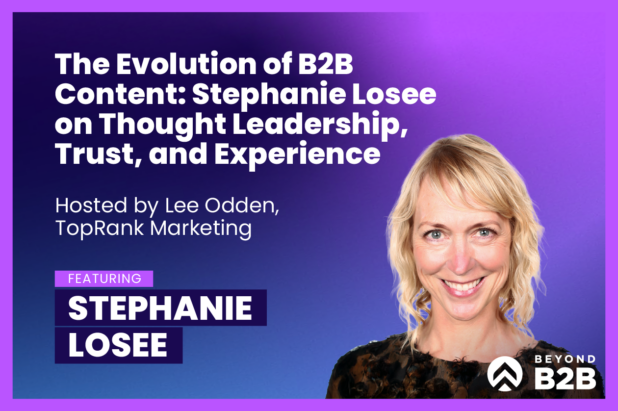B2B marketing content is quickly diverging into two separate paths: thought leadership, and thought followership.
The latter is more abundant than ever in the age of AI. Thought followership refers to content covering, exploring and synthesizing that which has been said or done before. It might be a repackaging of someone else’s idea, or an amalgamation of established best practices.
Thought leadership, meanwhile, is being made more indispensable than ever before — precisely because it’s one thing AI can’t replicate. Research continues to show that B2B thought leadership is one of the single most influential factors in shaping buying decisions and vendor preferences amid complex, trust-driven, group-based purchase dynamics.
Here’s a look at the latest data on thought leadership in B2B, the growing role of a distinctly human POV, and how to put your brand’s authentic perspectives and expertise at the forefront.
Why thought leadership is becoming a core differentiator for B2B brands
New research from LinkedIn for their B2B Marketing Benchmark, as highlighted in a recent guest post on the LinkedIn Marketing blog from our CEO Lee Odden, suggests that “trust is central to B2B marketing impact, with 94% of marketers agreeing that building trust is the most important factor for achieving B2B brand success.”
Building trust across functionally diverse buying committees can be very challenging in practice, especially because B2B marketers don’t always know exactly who they need to build it with. Many stakeholders with significant influence on B2B purchases — such as process experts from finance, operations and procurement — are largely hidden from marketing activities.
The 2025 B2B Thought Leadership Impact Report from Edelman and LinkedIn reveals that thought leadership content is especially powerful for building trust with these “hidden buyers,” 95% of whom say thought leadership makes them more likely to welcome sales outreach. The report also finds that high-quality thought leadership helps generate consensus with executives and fellow decision-makers.

Research from Momentum ITSMA for the Value of Thought Leadership 2025 showcases a similar impact: 70% of buyers say thought leadership helps multiple stakeholders within the buying group align on key issues to advance decision-making.
But there is a clear apprehension of, and aversion to, the sea of sameness: 59% of buyers believe they’ve seen almost identical thought leadership content from at least two providers. In Momentum ITSMA’s 2024 Thought Leadership Benchmark Report, 72% of senior marketers expressed fear that generative AL would make all thought leadership the same. We may be seeing it.
In order for your thought leadership to be a differentiator, it needs to be … different. It needs to uniquely encompass the people behind your brand and appeal to exactly what buyers want and need. Here’s how.
“Thought leadership doesn’t always get the credit it deserves. But when it’s bold, timely, and grounded in real insight, it drives measurable business outcomes.” – Sonja Jacob, Thought Leadership & Content Strategy Leader at Cisco (source)
How to center a human POV in your B2B thought leadership
An authentic voice channeling real experience and expertise is instrumental to making thought leadership work. Use the following techniques to maximize these traits, boosting the reach and influence of your content.
Lead with original data and experiential knowledge.
These are things that AI engines and competitors cannot match. The unique data you share might come in the form of original research your brand conducted and analyzed, or challenges and trends you’ve observed while serving your customers (e.g., “Our clients have seen a 30% drop in organic traffic on average since the introduction of AIOs”). On that same note, the stories and insights you’ve gained through experience — as a business, and as individuals who comprise it — are key to coloring a compelling point of view.
Pairing your own perspectives and original data with established thought leaders is a winning combination for earning credibility across buying groups. Successful B2B brands are seeing this combination prove useful.
“Influencers help validate the content you bring to market. Their perspectives and amplification build credibility, spark engagement, and often introduce ideas your brand can’t say on its own.” Janine Wegner, Dell Technologies
Championing unconventional influencers.
Not all thought leadership needs to feel polished or rehearsed. In fact, the message can feel far more relatable when it comes straight from the heart, or straight from a peer.
An important function of thought leadership for B2B brands is the impact of influence on the audiences you want to engage. Sources of influence are now more diverse than ever as more people are empowered to create content, attract communities of likeminded followers and share ideas. B2B brands are increasingly advancing thought leadership and influence through these diverse voices that buyers trust.
Recently on our blog, we shared a model for building a B2B influence engine by activating employees and executives as thought leaders and advocates. Partnering with your customers to create thought leadership is another way to resonate deeply.
Over 90% of respondents in a Forrester survey said that buyers completely or somewhat trust peers in their industry, with a further 85% saying they trust the customers of vendors in their industry.
Be distinctive and stay true to your brand.
Even when coming from a real person who knows their stuff, it’s easy for thought leadership to feel generic (or boring) if it isn’t creative and reflective of the brand’s personality.
Edelman’s 2025 thought leadership impact research found that form matters, with 60% of hidden decision-makers saying that a distinctive style signals high-quality thought leadership.

Use thematic visuals and video content to capture attention and make an impression. Offer new ideas and terminologies to stand out and get remembered. At TopRank, we often talk about solving challenges through the lens of Best Answer Marketing, which is a framework that TopRank Marketing has developed to help B2B brands engage their customers with distinctive and experiential thought leadership content to drive brand, demand and revenue outcomes.
Food for thought: Resigned to follow, or ready to lead?
The most impactful B2B thought leadership doesn’t come from AI prompts or recycled takes. It comes from people. From voices with real insight, experience, and perspective. If you want to lead, start by doubling down on what makes your brand — and your people — truly different.
In a business world becoming overrun by thought followers, make your brand a thought leader. Let’s talk about how we can help your content break through.



